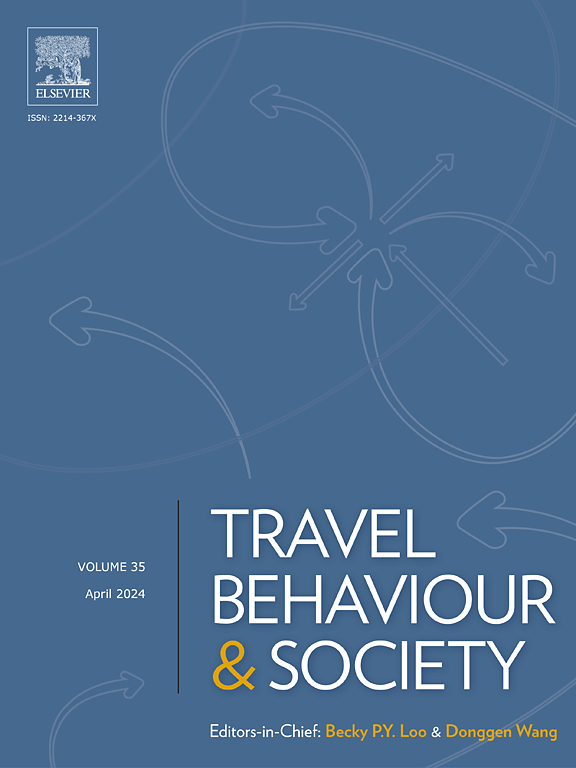探究油气罐车驾驶员的风险认知、驾驶任务认知和道路安全态度之间的关系
IF 5.1
2区 工程技术
Q1 TRANSPORTATION
引用次数: 0
摘要
全球道路交通事故死亡率为每 10 万人 18%,地区差异很大,尤其影响到非洲。尼日利亚油气罐车事故的日益频繁就体现了这一趋势,因此有必要探讨尼日利亚油气罐车驾驶员的风险意识、驾驶任务意识和道路安全态度之间的关系。本研究以 375 名驾驶员为样本,分析了 311 份有效问卷,反映了一致而全面的回答。探索性因子分析确定了三个关键因子,因子载荷从 0.580 到 0.915 不等。相比之下,确认性因子分析验证了这些构造 χ2/df = 1.285、CFI = 0.996、TLI = 0.971、NFI = 0.984、GFI = 0.995、AGFI = 0.949、RMSEA = 0.048 和 SRMR = 0.040。结构方程模型进一步评估了驾驶员的风险认知、驾驶任务认知和道路安全态度之间的关系,结果显示风险认知和道路安全态度之间存在正相关(β = 0.611,p <0.05)。风险认知与道路安全态度之间呈正相关(β = 0.611,p < 0.05),而影响道路安全的非驾驶活动之间呈正相关(β = 0.145,p < 0.05)。研究发现,职业生涯中期的驾驶员,尤其是教育背景有限的驾驶员,表现出与道路安全相关的特定态度和行为。这些发现强调,需要针对风险认知和驾驶任务采取有针对性的干预措施,以改善安全态度。建议包括针对不同年龄组和经验水平的定制培训计划,开展宣传活动以加强对交通规则的遵守,以及持续监测风险意识和道路状况以促进适应性安全干预。本文章由计算机程序翻译,如有差异,请以英文原文为准。
Exploring the nexus between risk perception, driving tasks perception, and road safety attitudes among oil and gas tanker drivers
Road accidents globally have an 18 % fatality rate per 100,000 population, with significant regional variations, particularly affecting Africa. The increasing frequency of oil and gas tanker accidents in Nigeria exemplifies this trend, highlighting the need to explore the relationship between risk perception, driving task perception, and road safety attitudes among Nigerian oil and gas tanker drivers. This study utilised a sample of 375 drivers, with 311 valid questionnaires analysed, reflecting consistent and comprehensive responses. Exploratory factor analysis identified three key factors, with factor loadings ranging from 0.580 to 0.915. In contrast, while confirmatory factor analysis validated these constructs χ2/df = 1.285, CFI = 0.996, TLI = 0.971, NFI = 0.984, GFI = 0.995, AGFI = 0.949, RMSEA = 0.048, and SRMR = 0.040. Structural equation modelling further assessed the relationships between drivers’ risk perception, driving task perception, and road safety attitudes, revealing a positive correlation between Risk Perception and Road Safety Attitude (β = 0.611, p < 0.05). There is a positive correlation between Risk Perception and Road Safety Attitude (β = 0.611, p < 0.05) and a positive correlation between Non-Driving Activities impacting road safety (β = 0.145, p < 0.05). The study found that mid-career drivers, particularly those with limited educational backgrounds, demonstrated specific attitudes and behaviours related to road safety. These findings underscore the need for targeted interventions that address risk perception and driving tasks to improve safety attitudes. Recommendations include tailored training programs for different age groups and experience levels, awareness campaigns to enhance adherence to traffic rules, and continuous monitoring of risk perception and road conditions to facilitate adaptive safety interventions.
求助全文
通过发布文献求助,成功后即可免费获取论文全文。
去求助
来源期刊

Travel Behaviour and Society
TRANSPORTATION-
CiteScore
9.80
自引率
7.70%
发文量
109
期刊介绍:
Travel Behaviour and Society is an interdisciplinary journal publishing high-quality original papers which report leading edge research in theories, methodologies and applications concerning transportation issues and challenges which involve the social and spatial dimensions. In particular, it provides a discussion forum for major research in travel behaviour, transportation infrastructure, transportation and environmental issues, mobility and social sustainability, transportation geographic information systems (TGIS), transportation and quality of life, transportation data collection and analysis, etc.
 求助内容:
求助内容: 应助结果提醒方式:
应助结果提醒方式:


